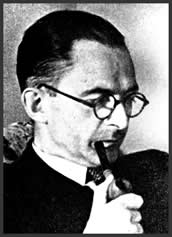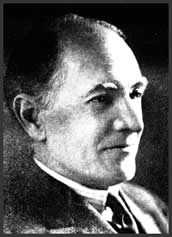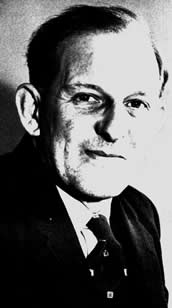Four Men of Vision
In June
1934, A.P.Rowe was working as a member of the Headquarters
staff for the Director of Scientific Research: Air Ministry;
Mr W.H.Wimperis.
In military
circles there seemed to be little sense of urgency in those
days and what little emphasis there was seems to have been
directed towards armament research rather than on defence.
Rowe began
to wonder…"whether or not Britain's air defence
arrangements were healthier than air armament". So against
this background of official complacency he decided to conduct
a 'trawl' of all the official files he could find that related
to early warning methods of research. There were just 53!
Most of the work that had been carried out related acoustic
mirrors and barrage balloons. He concluded that very little
true scientific research had been carried out.
The next
(very bold) step was to send a memo to his Director (H.E.Wimperis)
stating that unless "science could evolve some new method
of aiding air defence, we were likely to lose the war if it
started within the next ten years". Wimperis took this
unequivocal view seriously and within 5 months he had sanctioned
and instigated the Committee for the Scientific Survey of
Air defence under the leadership of a leading chemist of his
day; Sir Henry Tizard.
It was this group of scientists, who had to guide the research
into ways of obtaining as much early warning of an impending
air attack as possible.
Wimperis felt that some form of 'death ray' might be the answer
and so in January 1935, he asked his assistant A.V.Hill who
in turn contacted Robert
Watson Watt, Superintendent of the Radio Research unit
(part of the National Physical laboratory) at Slough.
Can you
produce a 'Death Ray?
Wimperis
had the idea that perhaps a very powerful electromagnetic
beam could penetrate the aircraft at some distance and in
some way incapacitate the crew. Watson Watt did not denigrate
the idea but passed the problem onto his assistant, A.F.Wilkins,
who pointed out that the power necessary would be well beyond
the capabilities of anyradio transmitter in existence at that
time. He did suggest that it might be possible to send out
a signal of sufficient power to produce an 'echo' which could
then be captured on a suitably modified receiver.
Furthermore,
perhaps by using two receivers, a two dimensional location
could be computed and a distance calculated by measuring precisely
the time it took for the echo to get back to the receiver.
At this juncture however, theory and practical application
were very far apart.
Wimperis
could see some faint glimmer of hope with this reply and he
asked Watson Watt if he could write a suitable report to be
submitted to the Tizard committee. The group were due to have
their first meeting early in the New Year (1935).
|


